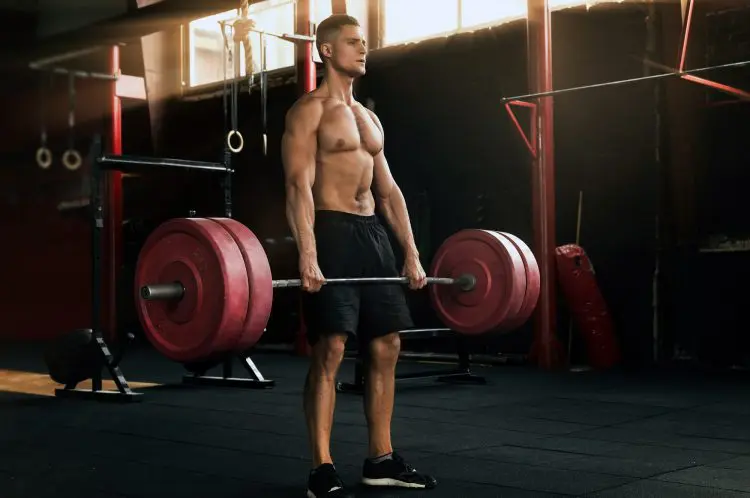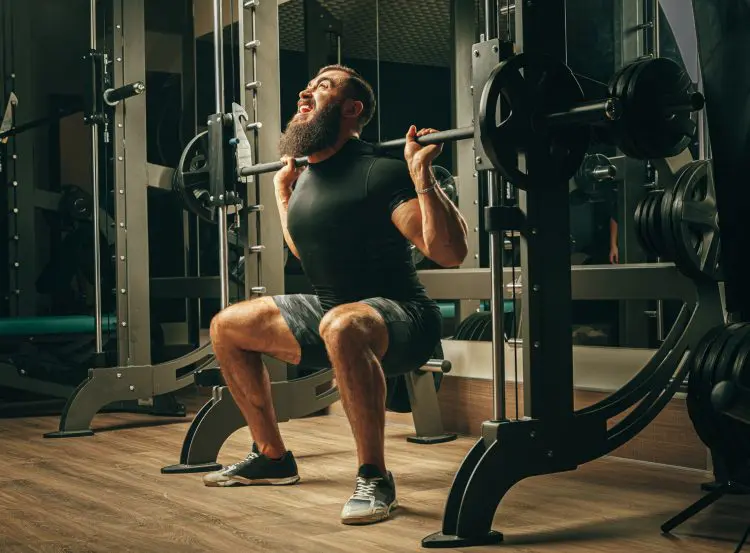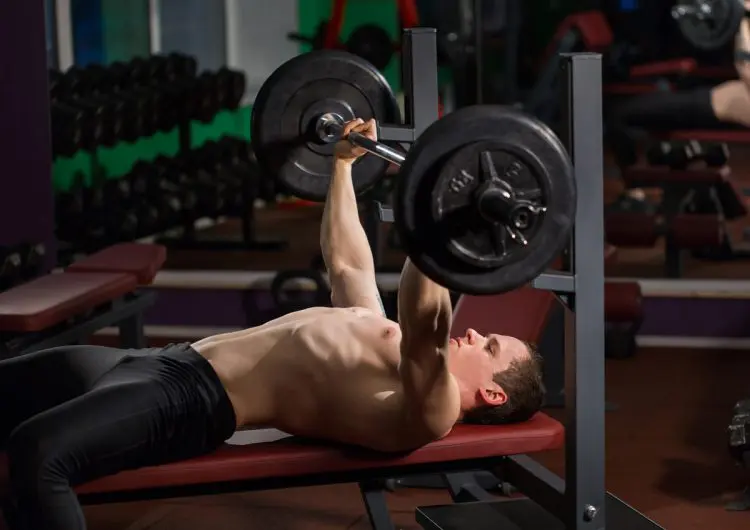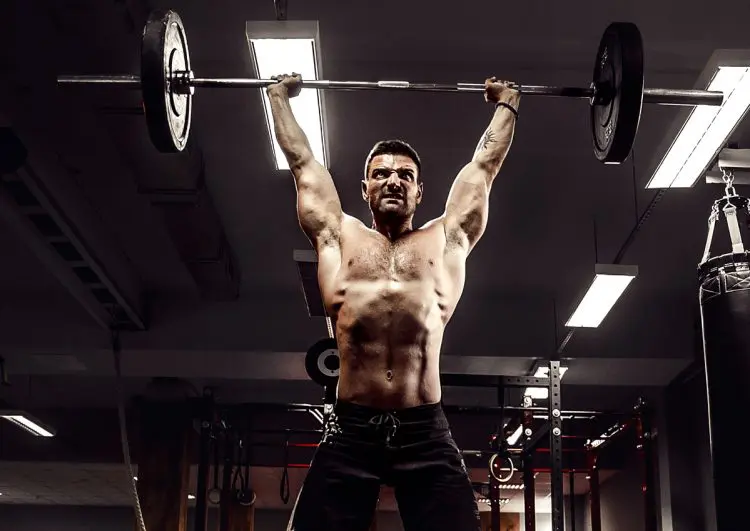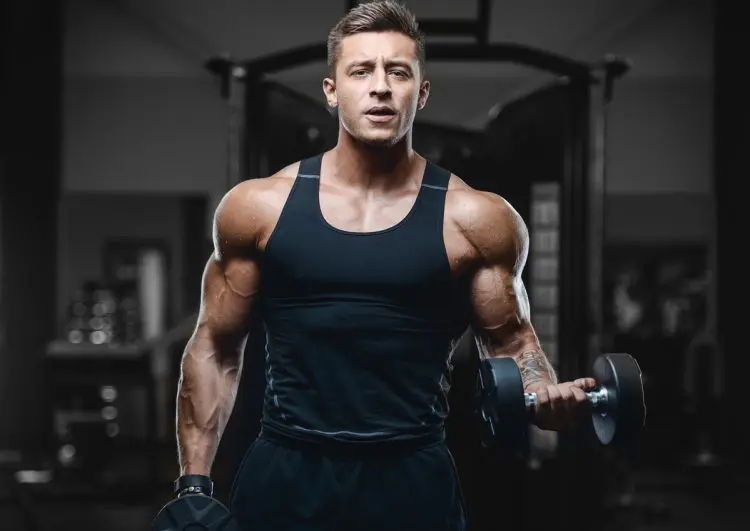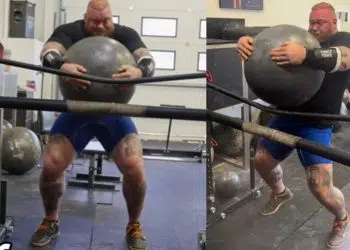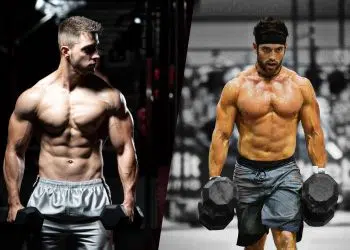Training frequency is a very personal matter. Some people are quite happy and get good results from just three workouts per week, while others prefer six or more. Exercisers who recover quickly between workouts may be able to cope with very few rest days per week. In contrast, older exercisers and anyone training especially hard may need more days off.
Optimal training volume is also determined by your training goals. For example, most people can do more cardio workouts per week than strength training, as cardio tends to be of lower intensity and easier to recover from.
The truth is that there is no ideal workout frequency, and things like chronological and training age, training intensity, volume, out of gym stress, rest, recovery, and diet will all affect how often you can or should work out.
However, arguably the most critical factor for determining workout frequency is your schedule and what time you have available.
After all, even if four workouts are optimal, that’s not much help if you can only train twice.
So, instead of telling you how often you should work out per week, in this article, we’re going to discuss how to make the most of the time you have available for training.
Level Up Your Fitness: Join our 💪 strong community in Fitness Volt Newsletter. Get daily inspiration, expert-backed workouts, nutrition tips, the latest in strength sports, and the support you need to reach your goals. Subscribe for free!
Zero Workouts Per Week
Just because you don’t have time to train for an hour or more several times a week doesn’t mean you can’t exercise. Lack of time IS a significant barrier to getting fit, losing weight, and building muscle, but it’s also one you can overcome if you are prepared to think a little outside the box.
If things like a new baby, work commitments, or schoolwork are keeping you out of the gym, the good news is that you can maintain a reasonable level of fitness and strength even if you can’t spare time for a workout.
The solution is micro workouts.
A micro workout is a training session that takes no more than 2-3 minutes that you can do almost anywhere, anytime, and several times per day. Using this approach will allow you to accumulate a beneficial amount of training volume despite not doing a regular-style workout.
For example, do the following workout every 2-3 hours, starting from when you get up:
- 10 pull-ups
- 20 push-ups
- 30 lunges (15 per leg)
If you do this six times over the course of a day, you’ll clock up a beneficial 60 pull-ups, 120 push-ups, and 90 lunges per leg. Each micro workout won’t take more than three minutes, which adds up to 18 minutes of training per day.
As an added benefit, all these micro workouts will keep your insulin sensitivity and GLUT4 levels high, improving nutrition partitioning and helping you maintain or lose weight. You’ll also get very good at your chosen exercises because you’ll be “greasing the groove,” which is a proven strength-building method.
While this isn’t an ideal training solution, it’s better than nothing and a viable option for those times when longer workouts are impossible.
One Workout Per Week
Let’s start this section by saying that one workout per week is FAR from ideal. But, if that’s all the time you’ve got, you can still make it work.
If you only have time for one training session per week, it goes without saying that you need to train your entire body. Build your workout around compound exercises, and be prepared for a lengthy training session – 90-120 minutes should be enough. You’ll also need to train hard, taking your sets close to failure. Use training systems to maximize workout intensity.
On the plus side, you’ve got a week to rest and recover, so you should have more than enough energy to push yourself to the limit. However, don’t expect amazing results from one workout per week. At best, you’ll make slow progress and may only manage to maintain your current strength and muscle size.
Compliment your one workout a week with micro workouts (strategy #1) to get more from your training.
Two Workouts Per Week
Two workouts are better than one, as it means you can either work your major muscles more frequently or with more training volume.
Your options include:
- Whole-body workouts twice per week, e.g., Monday and Thursday
- Upper body/lower body split
- Push/pull split
Because training volume is still very low, you should also consider doing some micro workouts on the days you can’t get to the gym.
Three Workouts per Week
While one and two workouts per week are better than nothing, you probably need three workouts or more to make measurable progress. Three workouts per week used to be a staple training frequency for old-school bodybuilders and can work whether you want to build muscle or strength.
Workout options include:
- Whole-body workouts three times a week, e.g., Monday, Wednesday, and Friday
- Push/pull/legs split
- Three-way body part split, e.g., chest and back/legs and core/shoulders and arms
- Powerlifting split, e.g., Squats and accessory exercises/bench press and accessory exercises/deadlift and accessory exercises
- Upper body/lower body/full body
The main downside of training just three times per week is that your workouts will probably be quite long, which may be a problem if you don’t have a lot of gym time.
Four Workouts Per Week
Four workouts per week mean you can say goodbye to full-body workouts and stick to split routines. Four workouts per week also mean you can, if you wish, train all major muscle groups twice per week if you prefer a higher training frequency.
Level Up Your Fitness: Join our 💪 strong community in Fitness Volt Newsletter. Get daily inspiration, expert-backed workouts, nutrition tips, the latest in strength sports, and the support you need to reach your goals. Subscribe for free!
Training four times per week also means you’ll be expending more calories, which may be beneficial if you want to burn fat as well as build muscle and strength. On the downside, if you train four times per week, at some point, you’ll have to work out two days in a row, so you’ll need to pay attention to rest and recovery, as well as program design.
After all, it could be detrimental to your performance and progress if you did two similar workouts on consecutive days, such as chest on Monday and shoulders on Tuesday.
Workout options include:
- Four-way body part split, e.g., legs/chest/back/shoulders and arms
- Upper body/lower body/upper body/lower body
- Powerlifting split plus an extra work out for accessory lifts
- Anatomical split, i.e., vertical upper body push and pull/hip dominant legs/horizontal upper body push and pull/knee dominant legs
Five Workouts Per Week
If you have the luxury of training five times a week, you can train all your major muscles longer and harder. This is useful if your main training goal is hypertrophy or muscle growth. More workouts per week can also mean shorter training sessions, as you can spread your workout volume over more sessions.
Options include:
- Five-way workout split, e.g., chest/back/shoulders/legs/arms
- One lift a day, e.g., squats/bench press/deadlifts/overhead press/pull-ups*
* With the one lift a day (ONLAD) program, you do just one major compound lift per workout, e.g., squats. You do a moderate to high volume for this main lift and then have the option to add a small amount of complementary accessory training to round out your workout.
Six Workouts per Week
If you want to train each major muscle twice per week, you really need to hit the gym six times. Six workouts per week are relatively standard in bodybuilding and was an approach favored by Olympia legends Arnold Schwarzenegger and Frank Zane. However, if you train six days a week, you MUST pay attention to rest and recovery. One day off per week won’t be enough if you aren’t getting plenty of sleep and eating properly.
Your options include:
- Push/pull/legs/push/pull/legs
- 6-way split, e.g., chest and triceps/quads/back and biceps/shoulders/hamstrings and calves/arms
Seven Workouts per Week
Generally, training seven days in a row is not necessary or recommended. After all, your body only recovers and grows when you rest. That said, it can work in a few situations:
- You’re about to take a break from training, such as a vacation
- You are planning a deload
- You’re building up to a competition
- You are going to significantly reduce your training afterward
If you feel that you have to train seven days a week to maintain or lose weight, you probably eat too much. Also, if you can’t stand the idea of missing a workout, you may have an exercise dependency.
Like many things, you can have too much of a good thing, even exercise. Training every day could actually be detrimental to your progress as your body won’t have time to recover between workouts.
That said, there is nothing to stop you from being physically active every day. In fact, that’s a good thing to aim for. You could workout 3-5 times a week and then hike, bike, or do some other kind of easy cardio on your non-strength training days. However, think of these sessions as active recovery, and don’t use them as extra workouts.
Eight (Or More) Workouts Per Week
As a young triathlete, I trained twice a day, seven days a week, for months on end. Days off were a rare luxury. That was the only way to hit my weekly mileage targets and pay equal attention to the three disciplines of triathlon (swimming, cycling, and running) and also have time for strength training.
Needless to say, this was a very demanding schedule and one that meant when I wasn’t training, I was eating or sleeping; I was a full-time athlete.
Looking back on this period with the benefit of hindsight, I probably should have focused more on training quality than quantity. But, with youth on my side, I recovered well between workouts and ignored the aches and pains that accompanied such an unrelenting training schedule.
So, should YOU consider training more than seven times a week?
Maybe!
One way to make such a high-frequency approach to training work is to split your workouts into two smaller sessions and train twice per day.
For example, you could train your chest in the morning and your triceps in the evening. This would make your workouts shorter and could mean that you have more energy per workout.
Alternatively, you could do easy fasted cardio for fat loss in the morning and then hit the weights and train for strength and size in the evening.
While two-a-day workouts can work, you should still make sure you have a couple of rest days per week, or you could end up suffering from overtraining. You’ll also need to pay extra attention to rest and recovery.
Wrapping Up
Fitness experts love to argue about what they think is the best way to achieve your training goals. When it comes to workout frequency, opinions vary, but most fall into the three to five sessions per week range.
While such an approach will work for most, it’s not always practical as not everyone has time to train that often. Similarly, some people really enjoy working out and prefer to hit the gym more frequently.
Ultimately, the ideal training frequency is the one you can maintain. If you can only train a couple of times a week, you can still make decent progress. Remember, too, that it’s always better to follow a program with fewer workouts per week and complete them all. More workouts might look better on paper, but if you miss more training sessions than you complete, your progress will undoubtedly suffer.
However much time you have available, use the information in this article to get the most from your workouts, be that one per week or six.


